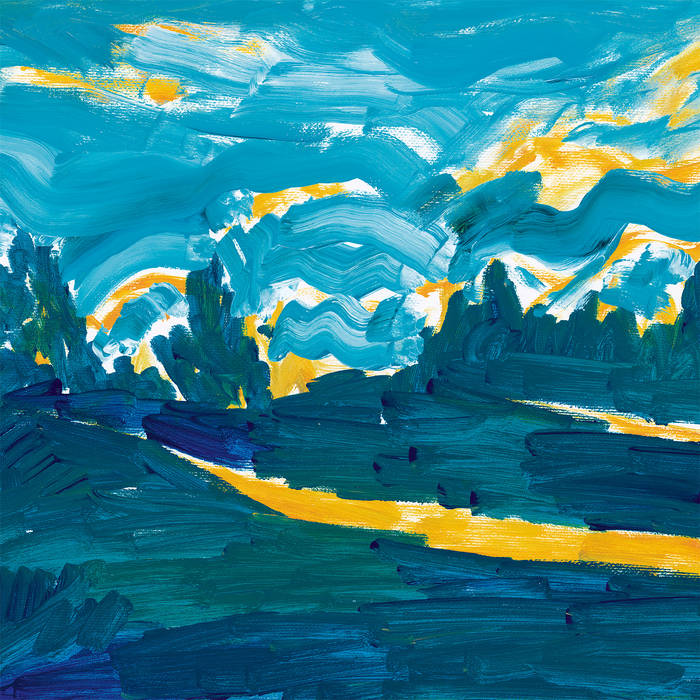For Berlin-based, Syrian musician Khaled Kurbeh, the vast tapestry of everyday life, with all of its chaos, routines, bureaucracy, and (mis)fortune, can be experienced through the application of predictable and unpredictable rhythms. Rhythms that often emerge from some of the least likely places.
On Kurbeh’s first album in seven years, Likulli Fadāin Eqāéh [To Each Space its Own Rhythm], stagnation is not an issue. A matter reinforced by the track titles, with their allusions to journeys and explorations, and by the perpetually moving sounds throughout. They never stand still, even when reduced to quietly looming ambience. The subdued notes of ‘Sunūnū al-Manara [Swallow of the Lighthouse]’, for example, slide by like barely glimpsed fish moving through a murky lake, adding a greater dose of mournfulness to the elongated whale-like calls.
Lighthouse aside, swallows also appear on ‘Nuzha I [Excursion I]’ amongst field recordings of cars and cracking sunflower seeds. And the supplementary noises don’t end there: opening track ‘Darb I-II [Path I-II]’ gets going with the click-clack of hurried typing and the spin of a cassette reel before introducing pumping harmonium and malleted prepared electric guitar. Soft synth tones gently fade away, resurfacing only to be cut off by the depression of a tape player’s controls. The tactile manipulation of machinery retaining tonality whilst producing rhythmic accompaniment to the rapid instrumentation shifts.
Traditional percussion is primarily used as punctuation rather than a driving force. Even the most rhythmically vigorous track, ‘Nuzha II [Excursion II]’, focuses on hand-drummed tubs building to a low-end crescendo and the toolbox rummage of ‘al-Ajrāf [The Cliffs]’ quickly switches to bowed-string horror beamed directly from a recently rediscovered Nostromo.
There are surprises, however, as tempestuous war drums, accompanied by the trap-like jangle of bells and cymbals, blast in, seemingly out of nowhere, at the end of ‘Jaquét Ajrās [Choir of Bells]’. That track initially lulling its listeners in with an eerie glockenspiel featuring core notes accompanied by quieter, more discordant meanders to generate tension. A hive of subliminal activity can also be found occurring between the prominently struck tones of the finale’s main melody, which returns to the slight, diminishing intonation of the opener but with an added ring of optimism running alongside. You’d be forgiven for thinking that the piece has ended as it disappears into silence, but there are subtle drones still there, working their magic.
Likulli Fadāin Eqāéh is a collection of carefully colligating fragments, specifically selected to flow from one to another through masked cadences. The disparate parts are neither dissonant nor jarring. Emerging out of the preceding track, the flurried parabolas of ‘Madd [Extend]’ finds jazzy Angelo Badalamenti-esque twists lurking amongst rising and falling FM synthesis. Like the brush strokes of different colours on the album sleeve, it all blends cohesively together, creating an emotive sense of structure that’s difficult to plan and even tougher to pull off.


